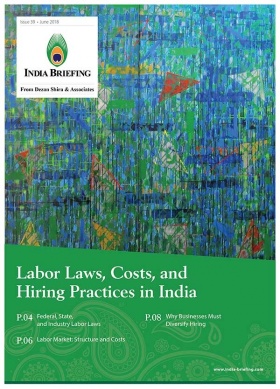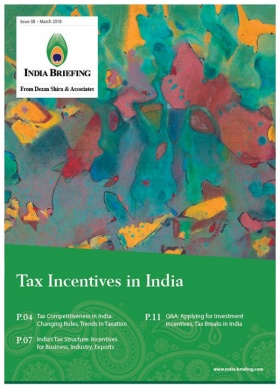Strong Growth Prospects for Luxury Market Investors in India
India is embracing luxury at its best.
This increasing sense of ‘brand-consciousness’ among Indians is principally attributed to the country’s burgeoning aspirational and younger middle class.
At the same time, increased internet penetration has also contributed to this consumer behavior, allowing consumers to search and satisfy their desire to own and possess designer brands.
Taken together, these factors will help India’s luxury sector grow by about 30 to 35 percent over the next three years – across categories as diverse as fine dining, electronics, luxury travel, luxury personal care, fashion, and jewelry.
Investing in India’s luxury sector
India’s share of the global luxury market is presently 1 to 2 percent; sales of luxury goods grew faster in India than anywhere else in the world in the last few years.
An annual sector trends report from the Confederation of Indian Industry (CII) and research agency Kantar notes that between 2015 and 2016, the Indian luxury market grew from US$14.7 billion to a whopping US$18.6 billion, at a growth rate of 25 percent year-on-year.
The CII-Kantar report also breaks down the share of the country’s luxury market geographically.
North India accounts for 40 percent of spending on luxury products and services, with the Delhi National Capital Region leading the consumption share, followed by Punjab and Haryana.
Southern and western India, each, account for around 25 percent and eastern India lags in the luxury market with a 10 percent market share.
With their growing affluence, India’s Tier-II and Tier-III cities are also emerging as new reservoirs of luxury spending.
Scope for foreign companies
With the rapid rise of online shopping for luxury brands in India, it is expected that online luxury stores will see investments of US$35 billion in 2016, which will double by 2020.
Previously, the traditional luxury clientele in India consisted of those who mostly shopped on their trips abroad. This trend still continues and needs to be tackled by luxury brands entering or operating in India.
Nevertheless, the modern Indian luxury consumer base is expanding, with a growing middle and upper middle class earning higher disposable incomes. Moreover, 70 percent of India’s population is younger than 35 years, and youngsters are highly discerning consumers due to increased awareness through the internet, growing influence of Western culture, and expansion of modern retailing.
Yet, while India’s consumer base is steadily growing and is more liberal in its spending habits, the desire for “value proposition” poses the greatest challenge.
In this regard, luxury brands will have to contend with such perceptions even as they differentiate themselves on the price platform.
India’s FDI policy
Authorities allow 100 percent foreign direct investment (FDI) in single-brand retailing and 51 percent in multi-brand retailing.
This opens up opportunities for international luxury brand companies when strategizing their business operations in the Indian market.
For instance, many French brands have already made plans to invest in India and open stores in the short term.
Established brands such as Louis Vuitton and L’Oréal are expanding further and increasing their investments, while some companies are recalibrating their joint venture partnerships to widen their Indian presence.
The removal of the cap on foreign ownership in single-brand retail and liberalization of FDI limits in multi-brand retail should encourage international brands to invest more.
Reflecting optimism over FDI liberalization, Tikka Shatrujit Singh, chief representative in Asia for LVMH, the French parent firm of Louis Vuitton and other global luxury brands, comments – “This was the last frontier to be opened. It will make India a preferred market.”
India’s competitive luxury market
These growth trends and drivers are some of the reasons why, apart from China, India is viewed as the most promising among all emerging markets.
India’s luxury spend is on par with the UAE, far ahead of Turkey, Thailand, and Argentina, and growing faster than Singapore and Australia.
Further, even as China is poised to become the world’s second largest luxury market by 2020, its ageing population and the growing chasm between its haves and have-nots, is throwing up tremendous challenges to its political and economic stability.
With the recent slowdown in the luxury sector in China, global markets have shifted their focus to players in India. India’s luxury sector is still in its emergent phase and will have many opportunities for future expansion and diversification.
The government, too, has taken progressive steps to make the process of entering the Indian market easier.
Key among these are the Make in India, Digital India, and Smart Cities initiatives.
Cumulatively, they seek to work on the gaps in India’s infrastructure (both physical and digital), expand the urban ecosystem in a sustainable manner, and revitalize the job market.
While these reforms are expected to help bring in more luxury brands to the country over the next few years, a young demography, strong economic fundamentals, and rising income levels serve to be the force multipliers responsible for the future growth of India’s luxury market.
About Us
India Briefing is produced by Dezan Shira & Associates. The firm assists foreign investors throughout Asia and maintains offices in China, Hong Kong, Indonesia, Singapore, Vietnam, and Russia.
Please contact india@dezshira.com or visit our website at www.dezshira.com.
- Previous Article India Sets GST Rates, App for July 1 Rollout
- Next Article Medical Tourism in India: Industry Growing to Meet Demand












